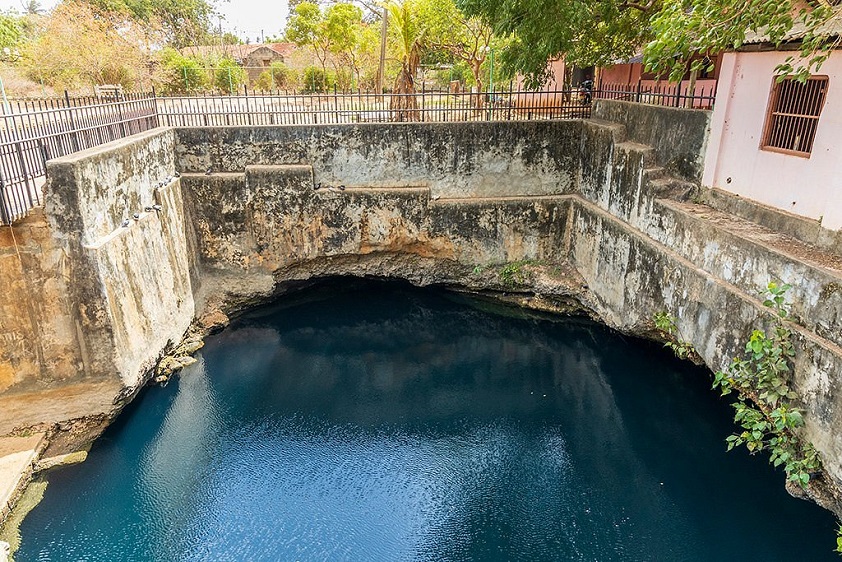Nilavarai is a location in the Jaffna District, Sri Lanka. It is popular for a natural underground Water well (Called Nilavari Bottomless well) where the water never gets depleted and it serves the irrigation of the neighbouring fields.
The Nilavarai Well is popular attraction in Jaffna lying in Puttur in the Navakkiri GS area of Valikaamam East division. Sometimes referred to as a bottomless well or Deep Well, this well is caused by collapse of the top layer, exposing a limestone cavern connected to a underground water source. It is said that this well never dries up even during severe drought and the water is used by the farmers in the surrounding area. The dimension of the well is 25 feet in length and 40 feet in width. As in many large public wells in the area, a flight of steps lead to the water level which is 14 feet below the surface level.
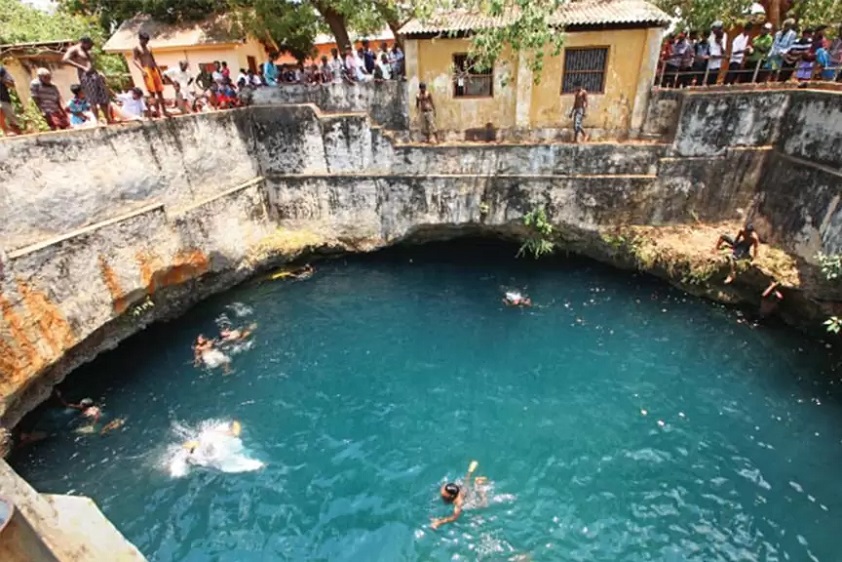
It is also said that the water level of the well falls and rises in synchronization with the low and high tide of the sea. Unfortunately no study of this well has been carried out partly due the 30 year bloody war with with Tamil Tiger Terrorists in this part of the country which ended in 2009. Fortunately a study of this curious well has been done in mind 1800’s and was published in the 1865-66 edition of the Journal of the Ceylon Branch of the Royal Asiatic Society of Great Britain & Ireland.
How to Reach?
From Colombo to Nilavarai Bottomless Well 403km Far away. You can choose easy way to reach Nilavarai Bottomless Well.
What You Can Do Here?
If you visit in Nilavarai Bottomless Well, there are lots of things to do for your enjoying. If you travelling Nilavarai Bottomless Well, you can swim, visit keerimalai springs & many more.
Here is a long list of major things to do in Nilavarai Bottomless Well. Which the first time travelers can visit and experience.
Visit Keerimalai Hot Springs
The Keerimalai Hot Springs is a natural spring lying on the northern coast of Jaffna, next to the west sea of Palaly. A bathing tank is built around this spring and a wall of stone separates the water of the spring and the sea. The spring is situated so close to the sea but still manages to get fresh water from an underground fresh water source. The spring waters flow through the crevices and fissures of the carbonated rocks encountering sea water as it emerges at Keerimalai. It is not a hot water spring, but the water is definitely soothing. The water has curative properties, since it flows through the fissures of the carbonated rocks; it acquires chemical values that are of therapeutic benefit to the human body.
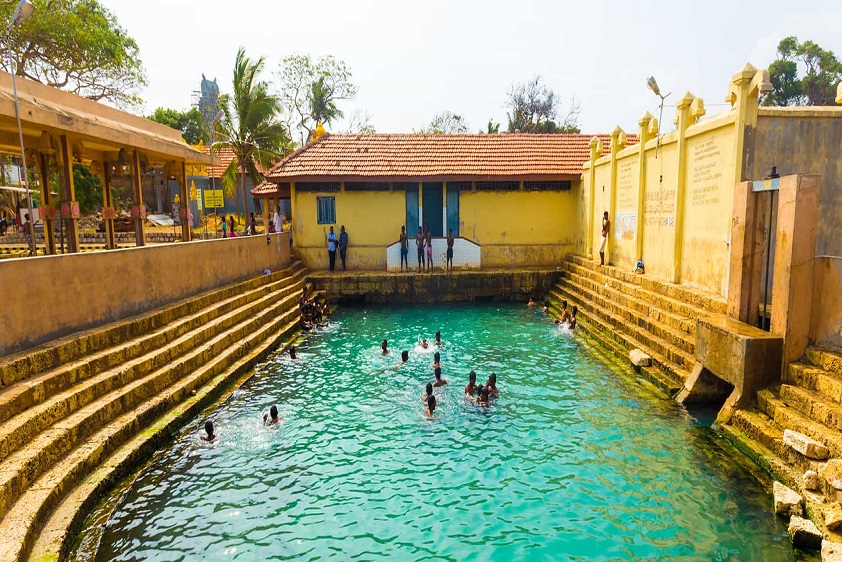
Wordhip Maruthanamadam Anjaneyar Kovil
Maruthanamadam Anjaneyar Temple is a sacred Hindu temple in the town of Uduvil. The temple attracts many devotees for its religious significance, peaceful ambiance and vivid sculptures of mythical creatures. An imposing 72-feet statue of God Hanuman, a warrior monkey, stands high within the vibrant temple.
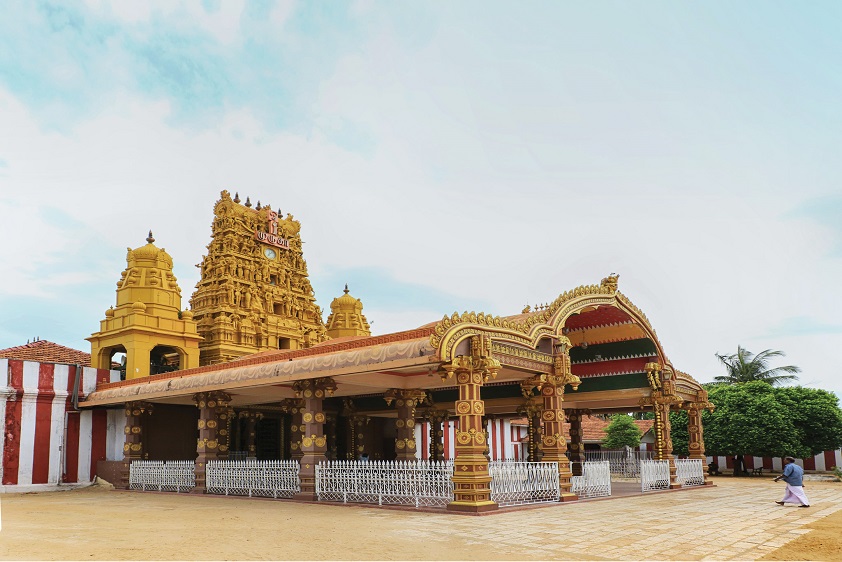
Watch Kadurugoda Temple & Ruins
Temple and Ruins are one of the few remaining Buddhist legacies in the northern province. Paul E. Peiris, the Jaffna Magistrate at 1917, documented nearly 60 gray coral-stone stupas when he discovered the ruins at the turn of the 20th century. Today however, only about 20 stupas remain sprawled across less than an acre of open land under palmyrah trees.
Located a half-hour’s drive away from Jetwing Jaffna, the Kadurugoda Temple and Ruins are found on the outskirts of the city in Kantarodai. It is said that this name was derived from the Sinhalese term, Kandavurugoda (a location of a military camp), which was eventually adopted as Kantarodai by the resident Tamil population of the area.
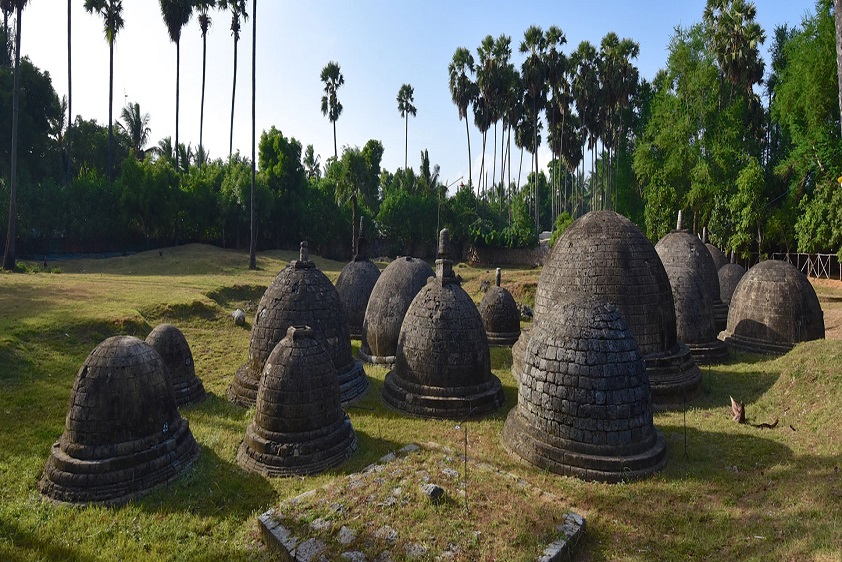
Where you can accommodation in Jaffna?
Jaffna has lots of number of Hotels, Restaurant & Resorts with modern amenities in reasonable price. There is calm and relaxing area, so you can spend time freely.

